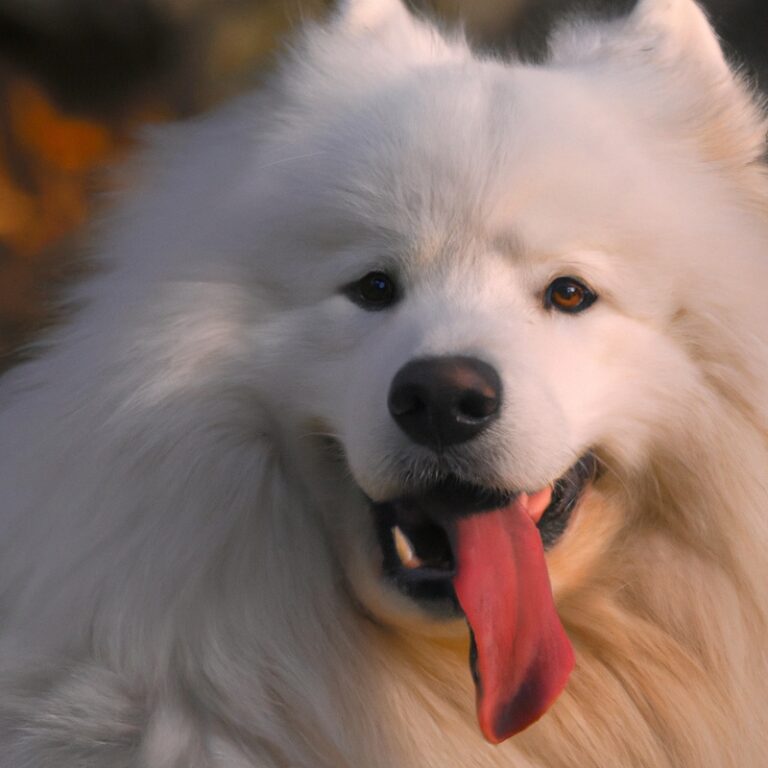Are Samoyeds Good Off-Leash Dogs?
Key Takeaways:
- 1) Samoyeds tend to have a strong instinct to wander, which can make them more challenging to keep off-leash.
- 2) Proper training and socialization can help improve off-leash behavior in Samoyeds.
- 3) While individual temperament varies, Samoyeds generally require a secure and controlled environment when off-leash.
- 4) It’s crucial to assess your individual Samoyed’s recall abilities and exercise caution when considering off-leash activities.
Are you considering getting a Samoyed as a furry companion, but unsure if they are good off-leash dogs? Well, you’ve come to the right place! As an expert in the field, I’ll give you the lowdown on these friendly and beautiful dogs.
Samoyeds have a fascinating history, stunning physical characteristics, and a lovable temperament.
But when it comes to off-leash training, there are a few factors to consider, such as their energy levels, prey drive, and trainability. In this article, we’ll explore the benefits and risks of having a Samoyed off-leash, along with some handy tips for successful training.
So, let’s dive in and find out if Samoyeds are your ideal off-leash companions!
| Criteria | Pros | Cons |
| Adaptability | Samoyeds are highly adaptable and can thrive in various environments. | Samoyeds have a strong prey drive and may be easily distracted when off-leash. |
| Trainability | Samoyeds are intelligent and can be trained to respond well off-leash. | Some Samoyeds may have a stubborn streak and require consistent training. |
| Socialization | Samoyeds are generally friendly and enjoy being around people and other dogs. | Without proper socialization, some Samoyeds may become anxious or may exhibit aggression towards other dogs off-leash. |
| Exercise Needs | Samoyeds are an active breed and require regular exercise, making them well-suited for off-leash activities such as hiking or agility. | If not given enough exercise, Samoyeds may become bored and exhibit destructive behaviors off-leash. |
| Reliability | With proper training and socialization, Samoyeds can be reliable off-leash companions. | Samoyeds may have a tendency to wander off or chase after interesting scents or animals when off-leash. |
Understanding Samoyeds as a Breed
History of Samoyeds
The Samoyed breed has a rich history that dates back thousands of years. These dogs were originally bred by the Samoyede people of Siberia, who used them for herding reindeer, pulling sleds, and serving as companions.
Samoyeds played an essential role in the survival of the Samoyede people, providing warmth, protection, and assistance in their harsh Arctic environment.
Their gentle and friendly nature made them beloved family pets as well. Today, Samoyeds continue to be popular as both working and companion dogs, maintaining their unique heritage and charm.

Physical Characteristics of Samoyeds
Samoyeds are known for their distinctive physical characteristics. They have a thick, double coat that keeps them warm in cold weather.
Their fur is typically white or cream-colored, which gives them a beautiful, fluffy appearance.
Samoyeds also have a smiling expression because of their upturned lips. They have dark, almond-shaped eyes that are friendly and intelligent.
Additionally, Samoyeds have a muscular build and a strong, slightly curved tail that curls over their back.
These physical traits make Samoyeds truly unique and captivating dogs.

Temperament and Personality of Samoyeds
Samoyeds are known for their friendly and gentle temperament.
They are incredibly sociable and love being around their family members.
These dogs are generally well-behaved and get along well with children and other pets.
Samoyeds are also intelligent and can be quite independent at times.
They have a strong sense of loyalty and are always eager to please their owners.
However, it’s important to note that Samoyeds can be quite stubborn, so consistent training and early socialization are necessary to help them become well-rounded pets.
Overall, Samoyeds make great companions with their loving and lively personalities.

Factors to Consider for Off-Leash Training
Samoyeds’ Energy Levels
Samoyeds have a moderate energy level.
They are known for their friendly and sociable nature, but they do require regular exercise to keep them physically and mentally stimulated.
Daily walks, playtime, and activities such as agility or obedience training can help fulfill their energy needs.
Keep in mind that every dog is unique, so it’s important to gauge your Samoyed’s energy levels and adjust their exercise routines accordingly.
Monitoring their weight and overall health is also essential.
Samoyeds’ Prey Drive
Samoyeds have a moderate prey drive, which means they may be tempted to chase small animals. This instinct is deeply ingrained in their breeding as sled dogs.
When off-leash, it’s important to be aware of their prey drive and take precautions to prevent them from running off after squirrels or rabbits.
It’s recommended to keep Samoyeds on a leash in areas where there is wildlife, or to train them extensively in recall commands to ensure their safety.
Samoyeds’ Trainability
Samoyeds are generally intelligent and trainable dogs, but they have an independent and stubborn streak. Consistent and positive reinforcement techniques work best when training Samoyeds.
Start training them from a young age and focus on socialization to help them become well-rounded dogs.
Patience, consistency, and using rewards-based methods will help you successfully train your Samoyed. Keep the training sessions short and engaging to maintain their interest.
Providing mental stimulation through puzzle toys and interactive games will also help with their overall trainability.
Benefits and Risks of Having a Samoyed off-leash
Benefits of Having a Samoyed off-leash
Having a Samoyed off-leash can provide several benefits for both you and your furry friend.
Firstly, it allows your Samoyed to exercise freely and explore their surroundings, which can help keep them physically and mentally stimulated.
Secondly, off-leash time can enhance your bond with your Samoyed, as you can engage in activities such as playing fetch or going for a leisurely walk together.
Lastly, off-leash training can help improve your dog’s recall and obedience skills, making them more reliable in various environments.
However, it’s essential to ensure you have a secure and safe area for off-leash activities and that your dog is well-trained and responsive to commands.
Risks of Having a Samoyed off-leash
Having a Samoyed off-leash can pose certain risks, such as the potential for your dog to run away or get lost. Samoyeds are known for their independent nature and love for exploring, so they may be easily distracted and wander off.
Additionally, their friendly and trusting demeanor may make them susceptible to approaching strangers or other dogs, which could lead to conflicts or accidents.
It’s important to carefully consider the environment and your dog’s training before allowing them off-leash to ensure their safety.
Tips for Successful Off-Leash Training
Start with Basic Training Commands
When it comes to training your Samoyed to be off-leash, starting with basic training commands is essential. Start by teaching your dog commands like “sit,” “stay,” “come,” and “heel” using positive reinforcement techniques.
Use treats and praise to reward your dog for following the commands correctly.
Practice these commands in different environments to ensure your Samoyed understands them in various situations. Consistency and patience are key to successful off-leash training.
Use Positive Reinforcement Techniques
When training your dog off-leash, using positive reinforcement techniques is key.
This means rewarding your Samoyed with treats, praise, or play when they demonstrate the desired behavior.
Instead of punishing your dog for mistakes, focus on praising and rewarding them for listening and staying close.
Consistency and patience are key in this process.
Remember to always use positive language and cues, and avoid yelling or scolding.
With time and the right approach, your Samoyed can become a great off-leash companion.
Gradually Increase Training Duration and Distance
To successfully train your dog to be off-leash, it’s important to gradually increase both the duration and distance of your training sessions. Start with short sessions in a controlled area and slowly build up the time and distance over time.
This will help your dog become more comfortable and confident off-leash while ensuring their safety.
Remember to always use positive reinforcement and rewards during the training process.
Practice in Controlled Environments
Practice in controlled environments is essential for off-leash training.
Start by choosing a safe, enclosed area to work on commands and obedience.
Fenced-in parks, dog training facilities, or your own backyard can serve as controlled environments.
Gradually increase distractions as your dog becomes more reliable in following commands.
Use positive reinforcement to reward good behavior and reinforce the training.
Remember to always prioritize your dog’s safety and gradually progress to more challenging environments.
Ensure Proper Socialization
Proper socialization is vital for your Samoyed’s success off-leash.
It helps them become comfortable and confident in different environments and with various people and animals.
Here are a few tips to ensure proper socialization:
- Start early: Begin socializing your Samoyed puppy as soon as possible. This allows them to develop positive associations with new experiences.
- Expose them to different stimuli: Introduce your dog to various sounds, sights, smells, and textures. This exposure helps them become well-rounded and adaptable.
- Gradual exposure: Take small steps when introducing your Samoyed to new situations. Gradually increase the difficulty level so they can build their confidence over time.
- Positive reinforcement: Always reward your Samoyed for calm and confident behavior during socialization. This helps them associate positive experiences with new encounters.
- Consistency: Make socialization a regular part of your Samoyed’s routine. Regular exposure to new people, animals, and environments will help them develop good social skills.
Remember, socialization is an ongoing process, so continue to provide opportunities for your Samoyed to interact with the world around them.
By ensuring proper socialization, you’ll be setting your Samoyed up for success when it comes to off-leash training.
Frequently Asked Questions (FAQs)
Can all Samoyeds be trusted off-leash?
Not all Samoyeds can be trusted off-leash. While some may have excellent recall and obedience skills, others might have a strong independent streak and be prone to wander off.
Training and socialization play a crucial role in determining whether a Samoyed can be trusted off-leash.
It’s important to start early and be consistent with training, using positive reinforcement techniques. Additionally, using a secure, fenced-in area or long-line leash can provide extra safety when allowing your Samoyed some off-leash freedom.
Can Samoyeds be trained to come back when called off-leash?
Yes, Samoyeds can be trained to come back when called off-leash.
With consistency, positive reinforcement, and early training, Samoyeds can learn to respond to their owner’s recall commands.
It’s important to start training from an early age and gradually increase the distractions and level of difficulty.
Building a strong bond with your Samoyed and using rewards they find motivating, such as treats or praise, can greatly enhance their recall training.
Always ensure their safety by practicing in a secure and controlled environment.
How long does it take to train a Samoyed for off-leash?
Training a Samoyed for off-leash can vary depending on the dog’s individual temperament and the consistency of training. On average, it may take several months to a year of dedicated training to achieve reliable off-leash obedience.
The key is to start with basic commands, such as recall and stay, and gradually progress to more challenging situations.
Consistency, positive reinforcement, and patience are essential in the training process. Remember, each dog is unique, so the training timeline may differ.
With the right approach, your Samoyed can become a well-behaved off-leash companion.
Are there any alternatives to off-leash exercise for Samoyeds?
Yes, there are alternatives to off-leash exercise for Samoyeds.
One option is providing mental stimulation through puzzle toys and interactive games.
Another alternative is using a long-line leash or a retractable leash to give your dog more freedom to explore while still maintaining control.
Additionally, you can consider enrolling your Samoyed in obedience classes or participating in agility courses to engage their mind and body.
Regular on-leash walks can also be a good form of exercise for your dog.
Final Verdict
Samoyeds can be great off-leash dogs, but it requires careful consideration and training.
Their energy levels and prey drive make them prone to wander and chase, so proper training is essential to ensure their safety.
However, the benefits of having a Samoyed off-leash, such as increased exercise and freedom, can greatly enhance their quality of life.
By starting with basic commands, using positive reinforcement, and practicing in controlled environments, Samoyeds can be trained successfully for off-leash adventures.
Remember, each dog is unique, so it’s important to assess their individual temperament and exercise needs.
Overall, with the right training and precautions, Samoyeds can thrive off-leash.







